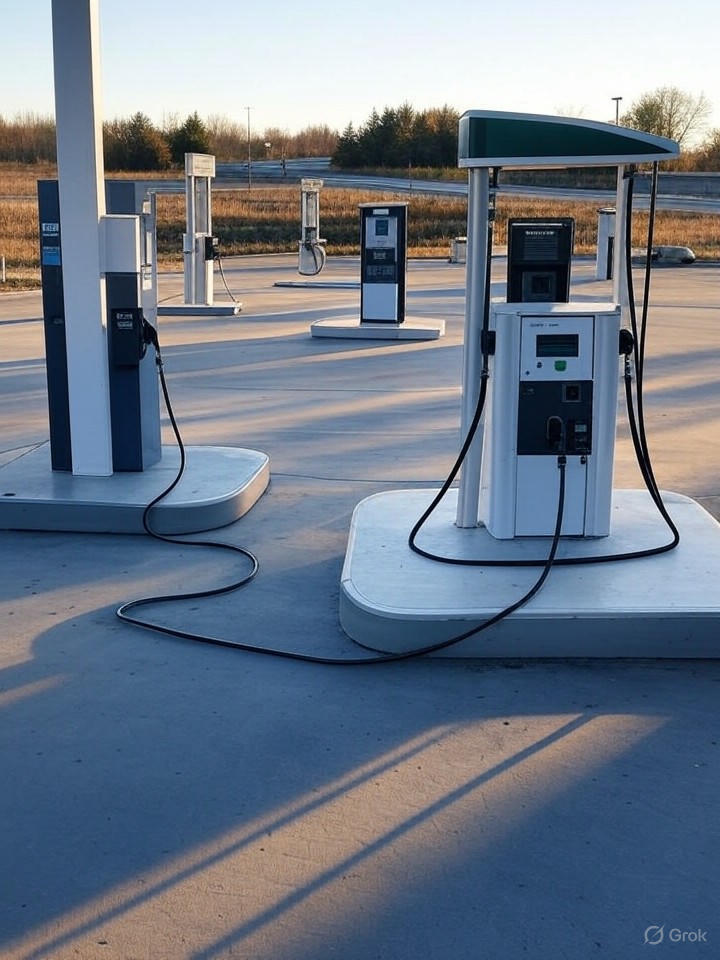As the electric vehicle revolution accelerates, traditional gas stations and highway rest stops are poised for a dramatic transformation. A recent article in Wired highlights how a resumption of federal funding could reshape these familiar pit stops into multifaceted energy hubs. After a six-month hiatus, the Biden administration has released $5 billion in grants aimed at bolstering EV charging infrastructure across the U.S., with a notable provision that prioritizes installations at existing gas stations and convenience stores.
This shift comes at a critical juncture. With EV sales surging—projected to reach 30% of new vehicle purchases by 2030, according to the International Energy Agency— the demand for reliable charging options is outpacing current supply. Gas stations, long reliant on fuel sales for revenue, now see an opportunity to diversify. Operators like Sheetz and Wawa are already expanding their footprints, incorporating EV chargers alongside traditional pumps, as detailed in a New York Times report from June 2025.
Federal Funding’s New Direction
The funding, part of the National Electric Vehicle Infrastructure (NEVI) program, had been frozen amid policy reviews but is now flowing again with strings attached. States must ensure that at least 80% of the chargers are installed at locations that already offer amenities like food, restrooms, and 24/7 access—criteria that perfectly describe most gas stations. This “new catch,” as Wired describes it, is designed to make charging more convenient and integrated into daily life, potentially accelerating adoption by reducing range anxiety for drivers.
Industry insiders view this as a boon for Big Oil’s retail arms. Companies such as ExxonMobil and BP, which own vast networks of stations, could leverage their real estate to capture a slice of the EV market without building from scratch. A CNBC analysis from 2023 anticipated such changes, noting that gas station economics would evolve as EVs displace gasoline vehicles, with charging potentially becoming a high-margin service.
Challenges in Infrastructure Buildout
Yet, hurdles remain. Reliability issues plague existing chargers, with Harvard Business School research from 2024 revealing that only 78% function as expected, leading to frustration among users. Pricing varies wildly, often compared to the “Wild West” in that study, which could deter widespread use unless standardized.
Rest stops, particularly along interstates, are another focal point. The Alternative Fuels Data Center reports tens of thousands of stations nationwide, but many are concentrated in urban areas. Expanding to rural highways requires significant investment in grid capacity and fast-charging tech, as outlined in the IEA’s Global EV Outlook 2024.
Economic Implications for Operators
For gas station owners, the transition involves upfront costs but promises long-term gains. Installing Level 3 fast chargers can run upwards of $100,000 per unit, per estimates from PwC’s 2021 report on EV charging growth. However, with federal subsidies covering much of that, operators could see returns through increased foot traffic and ancillary sales like snacks and beverages—areas where margins are already slim on fuel alone.
Vox’s 2025 piece on the “gas station of the future” envisions these sites as energy-agnostic oases, blending EV charging with hydrogen options and even solar-powered amenities. This hybrid model could sustain revenue as gasoline demand wanes, projected to drop 20% by 2030 in some scenarios.
Future Trends and Innovations
Looking ahead, innovations like wireless charging and ultra-fast stations could further integrate with rest stops. A ScienceDirect review from 2023 discusses global challenges, emphasizing the need for scalable solutions to handle peak loads without straining power grids.
Recent news from J.D. Power’s 2025 EVX Public Charging Study, as reported in Business Wire, shows progress: fewer failed attempts and improving satisfaction, with Tesla leading but legacy automakers catching up. Massachusetts’ $46 million investment, announced via Mass.gov, exemplifies state-level efforts to fill gaps in secondary corridors.
Industry Adaptation Strategies
Analysts predict the EV charging market will skyrocket to $113.4 billion by 2032, per Persistence Market Research, driven by a 20.3% CAGR. This growth underscores the urgency for gas stations to adapt. Mining Technology’s survey highlights infrastructure as a barrier even in heavy industries, suggesting broader implications for transportation hubs.
Ultimately, the convergence of policy, technology, and consumer behavior is redefining these roadside staples. As Wired posits, the future of EV charging isn’t in isolated lots but embedded in the very places drivers already frequent, ensuring a smoother transition to an electrified era.




 WebProNews is an iEntry Publication
WebProNews is an iEntry Publication